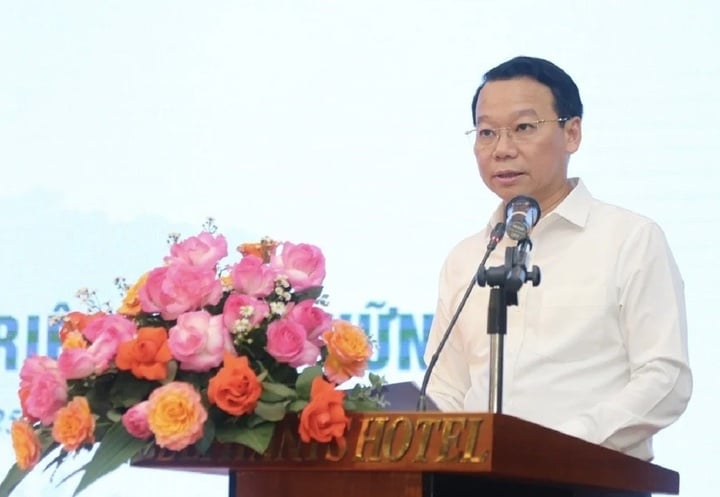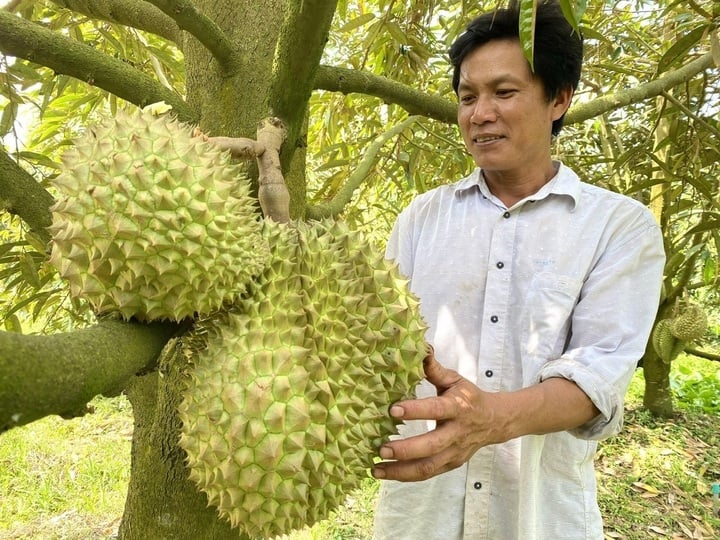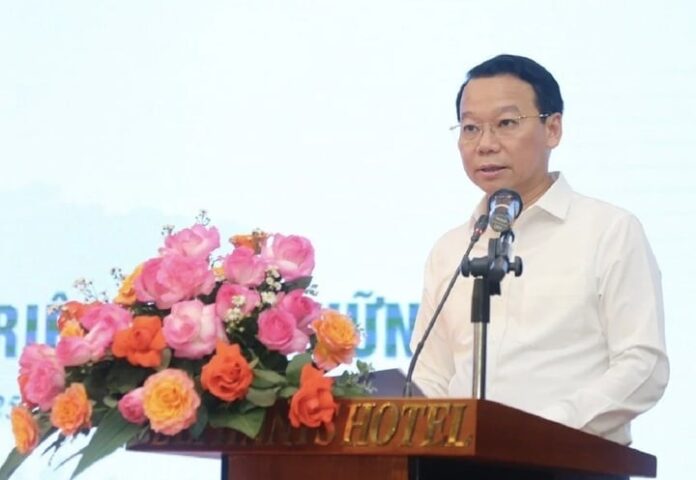Preventing the Uncontrolled Expansion of Durian Plantations
At the Sustainable Durian Development Conference, Minister of Agriculture and Environment, Du Do Duc, requested that local authorities thoroughly examine natural conditions, soil types, and infrastructure to determine suitable areas for durian cultivation.
Expanding the area of durian plantations should be based on scientific grounds, and we must not rush into following trends or encroach on forest land and sloping land, which can lead to soil degradation and ecological imbalance.
The Minister noted that currently, only about 20-25% of the total durian-growing area in the country has been assigned a growing area code, which is still very low compared to the requirements for official exports. Increasing this ratio to 70-80% could significantly enhance the value of the industry.
To achieve this, the Minister instructed local authorities to tighten the management of growing area codes and packing facilities, clearly defining the responsibilities of each code owner. Violations such as lending codes, falsifying documents, or committing origin traceability fraud should be strictly handled.

Minister Du Do Duc. (Photo: Mae.gov.vn)
“The durian industry needs to urgently review suitable growing areas to prevent uncontrolled expansion and the misuse of forest and sloping land. Strict planning management is necessary to ensure that uncontrolled development does not harm ecological balance and production safety,” emphasized Minister Du Do Duc.
He further highlighted that periodic inspections and strict handling of code fraud will be stipulated in the soon-to-be-issued circular.
Regarding the establishment of an internal control system, the head of the agriculture sector suggested mobilizing the synchronized participation of management agencies, local authorities, industry associations, businesses, and farmers.
He proposed exploring the lychee management model in Bac Giang, where a transparent traceability system has been established, for potential application to durian plantations. Additionally, international experiences can be drawn upon to enhance chain governance effectiveness.
“Transparency, accountability, and sustainability will be the guiding principles for the durian industry in the next phase. These are essential requirements to maintain growth momentum, enhance competitiveness, and meet increasingly stringent international standards,” emphasized Minister Du.
Taking a Tough Stance Against Violations
According to Vu Phi Ho, representing the Tay Nguyen Durian Joint Stock Company (Sarita), many new plantation areas face challenges in technical management, especially in controlling pesticide residues. The situation is complicated by small-scale, unorganized farming, as farmers learn and apply techniques from various sources without proper guidance.
Meanwhile, Mr. Duong Mah Tiep, Vice Chairman of the People’s Committee of Gia Lai Province, emphasized the lack of legal provisions and penalties for violations related to growing area codes and packing facilities. Therefore, the province has proposed the early issuance of regulations on sanctions to handle violations strictly.

The Ministry of Agriculture and Environment calls for tight quality control from the farm to export to reshape Vietnam’s durian market. (Illustrative image)
Mr. Nguyen Tri Ky, Chairman of the Business Association of Dak Nong Province, pointed out the reality of imported fertilizers that have not been tested for the safety thresholds of heavy metals such as cadmium, mercury, and arsenic.
However, he suggested that resolving this issue involves not only tightening management but also providing supportive solutions and accompanying farmers and businesses. He proposed enhancing the control of fertilizer quality right from the import stage and during their circulation in the market.
Regarding durian quality control, Mr. Huynh Tan Dat, Director of the Department of Crop Production and Plant Protection (MAFE), shared that the Ministry has directed localities to strengthen inspections and handle violations strictly.
“The Ministry is also negotiating with China to expand the growing area, recognize more packing facilities, and soon issue guidelines on cadmium and yellow substance residues. If we don’t tightly control the growing area and quality, exports could be halved,” warned Mr. Dat.
Minister Du Do Duc acknowledged that he has requested strict quality control of durian from the farming stage to each export container. He admitted that many growing areas and packing facilities have not yet fully met the requirements for quality and origin traceability, resulting in some batches being returned, damaging the industry’s reputation.
“We have issued sustainable durian production procedures, controlling the process from the growing area to export, requiring inspection and strict handling of the use of prohibited substances to make the fruit shiny. Serious cases will be criminally handled,” affirmed Minister Du Do Duc.
The Ministry has worked with Chinese customs to grant an additional 829 growing area codes and 131 packing facility codes and will continue to strengthen inspections and handle violations.
However, the Minister expressed concern that over 90% of Vietnam’s durian output relies on the Chinese market, which offers logistical advantages but entails risks, especially during peak harvest seasons.
The Ministry is actively exploring solutions to diversify markets, seeking opportunities to export to Japan, the Middle East, South America, and encouraging product diversification to mitigate risks when the main market fluctuates.
According to Mr. Huynh Tan Dat, as China was the main export market for Vietnamese durian in 2024, accounting for 97.2%, the country’s durian export turnover will be affected by any fluctuations in the Chinese market.
The head of the Crop Production and Plant Protection Department further informed that in 2025, Vietnam remains the second-largest durian supplier to China but has experienced a significant decline of 71.3% in volume and 74% in turnover. Vietnam’s market share in China decreased from 42.1% in 2024 to 28.2%.
















